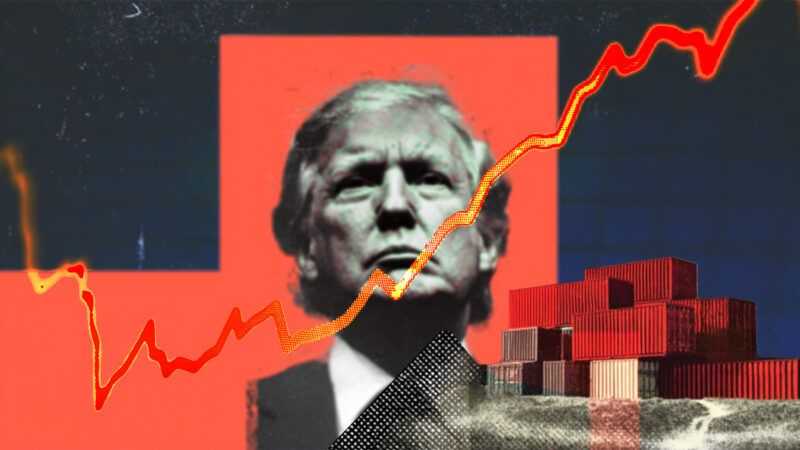Trump Seeks Even Higher Tariffs: 'Between 15 Percent and 50 Percent' on Imports From All Countries
The 10 percent baseline reciprocal tariff rate was bad for America; the 15 percent rate is even worse.

President Donald Trump said on Wednesday that "we'll have a straight, simple tariff of anywhere between 15% and 50%." Hiking the baseline reciprocal tariff rate to 15 percent means a 50 percent higher tax on American manufacturers and consumers than Trump originally promised.
The president announced his so-called reciprocal tariffs via his "Liberation Day" executive order on April 2. This order set the baseline rate at 10 percent, but Trump's Wednesday remarks suggest that "he would not go below 15% as he sets so-called reciprocal tariff rates ahead of an Aug. 1 deadline," according to Bloomberg.
Though the Trump administration has offered conflicting justifications for the president's tariffs, Treasury Secretary Scott Bessent has long referred to them as a "negotiating strategy" and said the U.S. was willing "to go down to a 10% baseline tariff for [every country in the world who wants to come and negotiate]." White House trade adviser Peter Navarro said in April that the administration would "run 90 deals in 90 days."
At the time of writing, the U.S. has brokered only five trade deals: with the U.K., Vietnam, the Philippines, Indonesia, and Japan. In every case but the U.K., the agreed-upon tariff rates are higher than the baseline rate of 10 percent and are, in every case, markedly higher than they were in 2022, meaning Americans will pay more for goods from these countries than they would have three years ago.
Trump announced on Wednesday the U.S.-Japan Strategic Trade and Investment Agreement, which sets reciprocal tariffs on Japanese imports at 15 percent and commits Japan to invest $550 billion in American industry and infrastructure at Trump's direction, according to the president's TruthSocial post. Reason's Eric Boehm explains that, though the 15 percent reciprocal tariff rate is lower than the Liberation Day rate, it "amounts to roughly a 650 percent tax increase on those imports" from the less than 2 percent average tariff rate on imported Japanese goods in 2022.
On Tuesday, the administration announced a deal with Indonesia, which will pay a reciprocal tariff rate of 19 percent. Like Japan, while this rate is lower than the 32 percent tariff announced on Liberation Day, it is nearly five times higher than the applied weighted average tariff rate of 4.11 percent that preceded the deal.
Trump also announced a trade deal with the Philippines, likewise subjecting the nation to a 19 percent tariff, which is not only higher than the Liberation Day rate of 17 percent for that nation but over 13 times higher than the applied weighted average tariff rate of 1.40 percent on American imports of Filipino goods in 2022, according to World Bank data.
Earlier this month, Trump struck a deal with Vietnam, which was anything but fair. Boehm explains that, following the deal, "American exports to Vietnam will face no tariffs while Vietnamese goods imported into the United States will face tariffs of between 20 percent and 40 percent." In 2022, the applied weighted average American tariff rate on Vietnamese goods was only 4.63 percent, per the World Bank.
The U.S.-U.K. Economic Prosperity Deal was struck in May. So far, this is the only trade deal that has maintained the original 10 percent baseline reciprocal tariff on foreign imports. Boehm explains that the real winners of the deal are British consumers, who will enjoy lower prices following the U.K.'s reduction of the average tariff rate on American exports to 1.8 percent. American consumers, however, will bear higher prices as the U.S. tariffs U.K. imports at nearly eight times the 1.32 percent 2022 applied weighted average tariff.
Trump's threatened reciprocal tariffs have only led to a handful of trade deals that all harm American consumers and domestic manufacturers. Hiking the baseline tariff rate to 15 percent will only make things worse.


Show Comments (53)